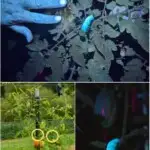
Tomato gardeners, I’d like to paint an all-too-familiar scene for you. You’re out in the garden, happily picking ripe tomatoes from your plants, when you notice a twiggy, leafless branch. You recoil in shock; what on earth could have done it? There were definitely leaves on that branch yesterday.
Looking around, you suddenly notice several tomato plants with gnawed branches.
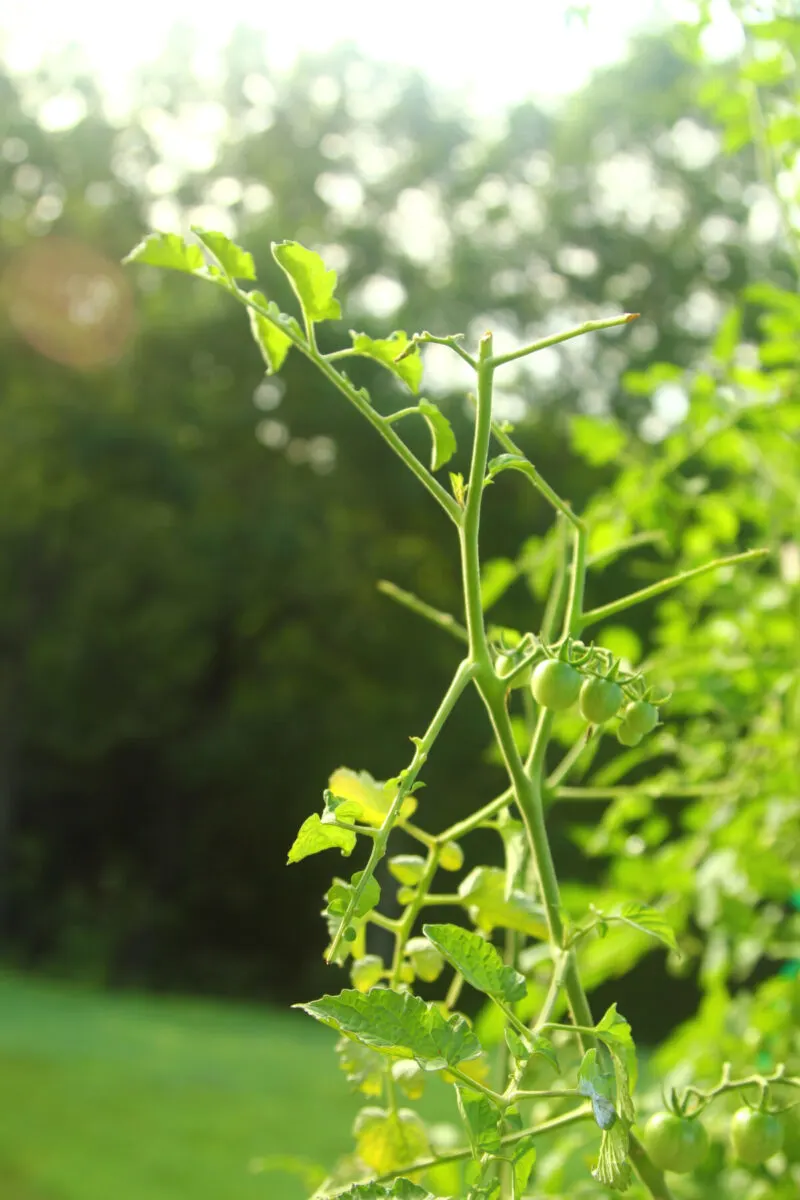
You scan the plants, looking for the culprit, but to no avail. So, you give up. Whatever it is, it must have moved on.
Nope.
The next day, your tomato plants are sporting even fewer leaves. It’s getting serious now. You’ve got tomatoes at risk of sunscald; the plants need leaves to photosynthesize energy, and you can’t find what’s eating your plants.
That’s when you see them. Large grenade-shaped caterpillar poop at the base of your tomato plant.
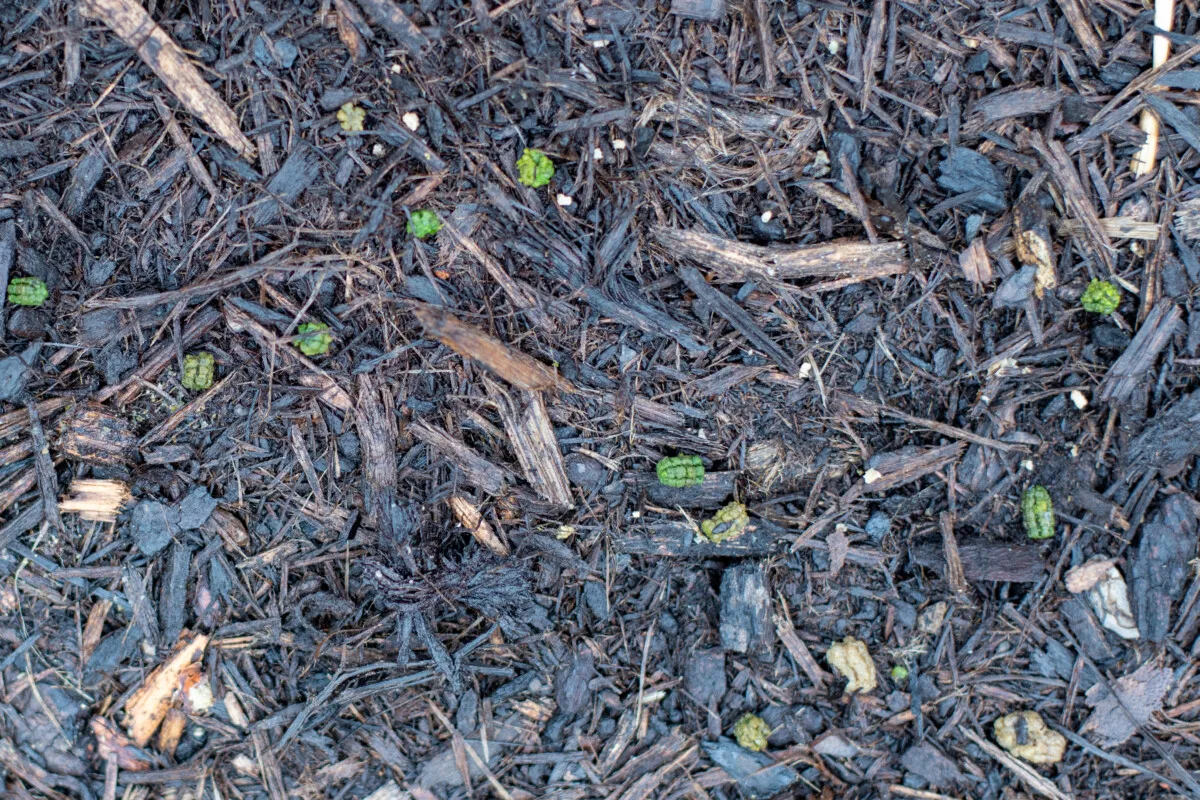
Oh no, tomato hornworms!
You search desperately for the chubby little munching machines and manage to find a few.
The problem is these chonky caterpillars have evolved to blend in seamlessly with their favorite host plants – tomatoes and tobacco. As they eat, their skin changes to match the plants they are nibbling on.
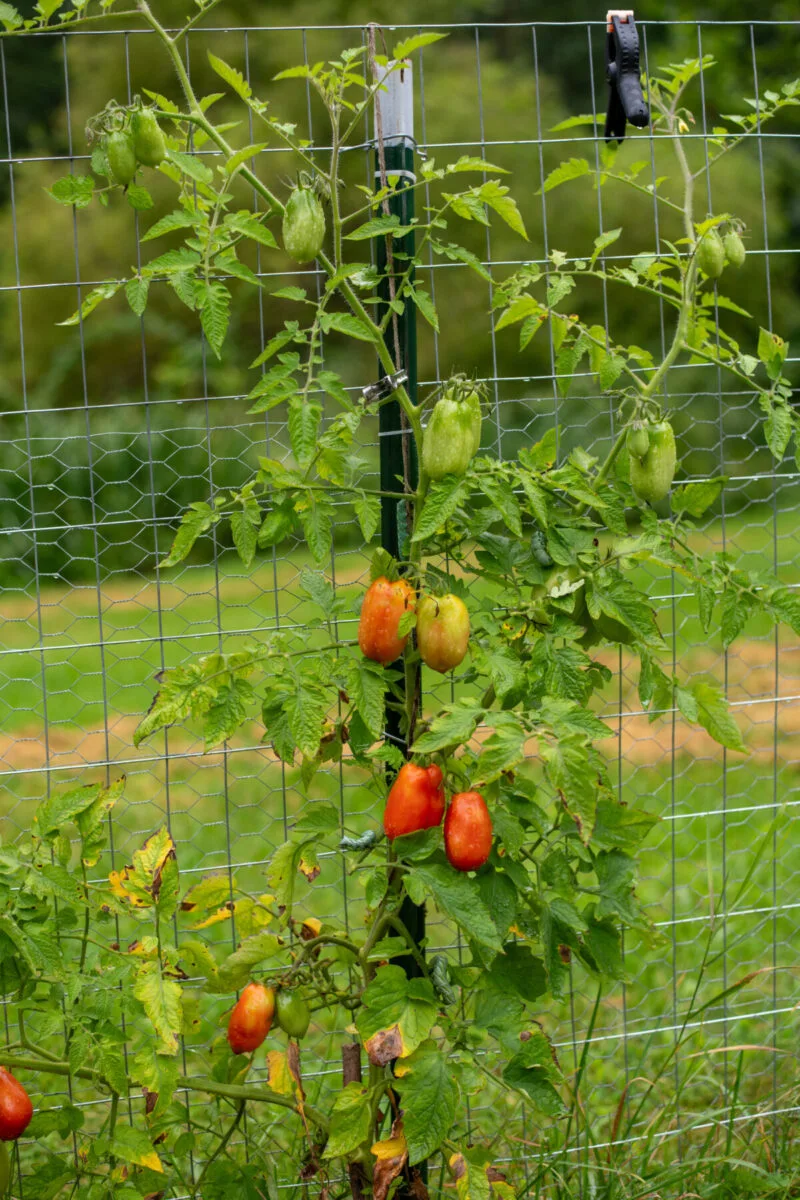
Their camouflage is so good that it’s only when they’ve eaten half your tomato plants and grown as long and thick as your finger that you can finally spot them. And often, the only thing that makes them visible is when they play host to the bright-white eggs of a parasite wasp.
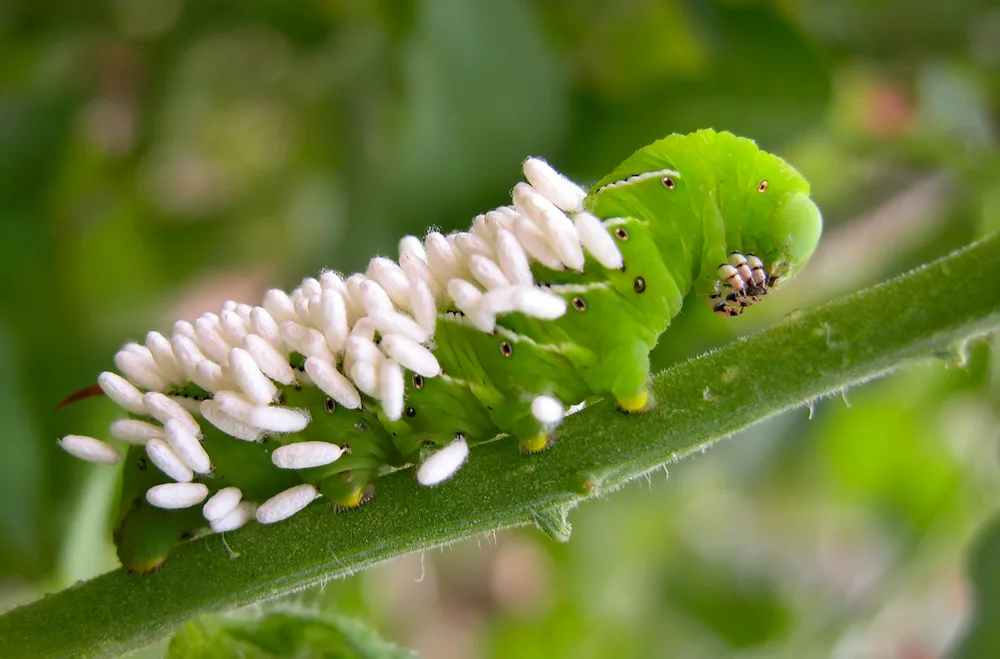
Of course, that’s just the big fat ones that are days away from becoming a pupa.
What about the little ones? You know, where there’s one, there are likely dozens more. Those tiny tomato hornworms are feasting on your plants, and who knows how much damage they will do until you manage to find them all.
That is unless you own a UV flashlight.
Yup, this inexpensive and simple tool can save your tomatoes and provide an evening of goofy garden fun.
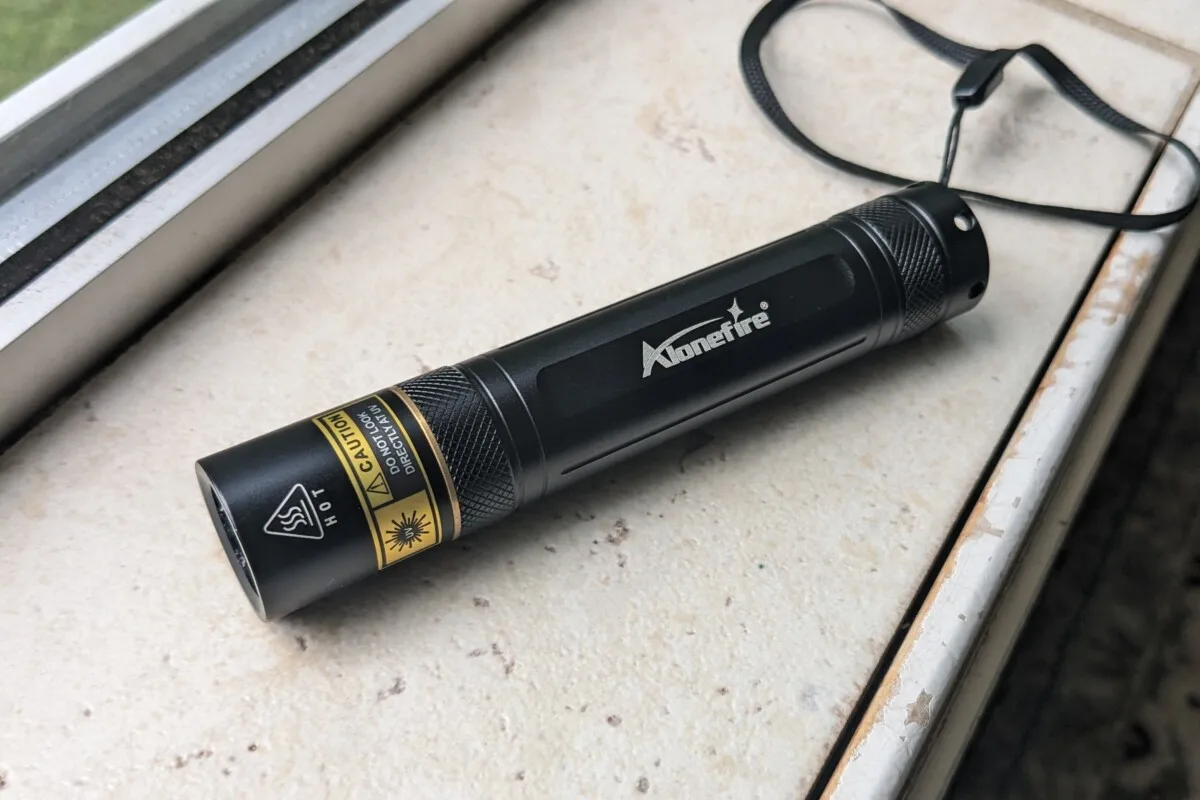
You can pick one up on Amazon. We used my Sweetie’s UV flashlight – an Alonefire SV003. (He collects uranium glass and brings his UV flashlight whenever we go antiquing.)
Oh yes, those fat, tomato-destroying caterpillars might be experts at blending in during the daylight hours. But when the sun goes down, they simply can’t hide from the beam of a UV flashlight.
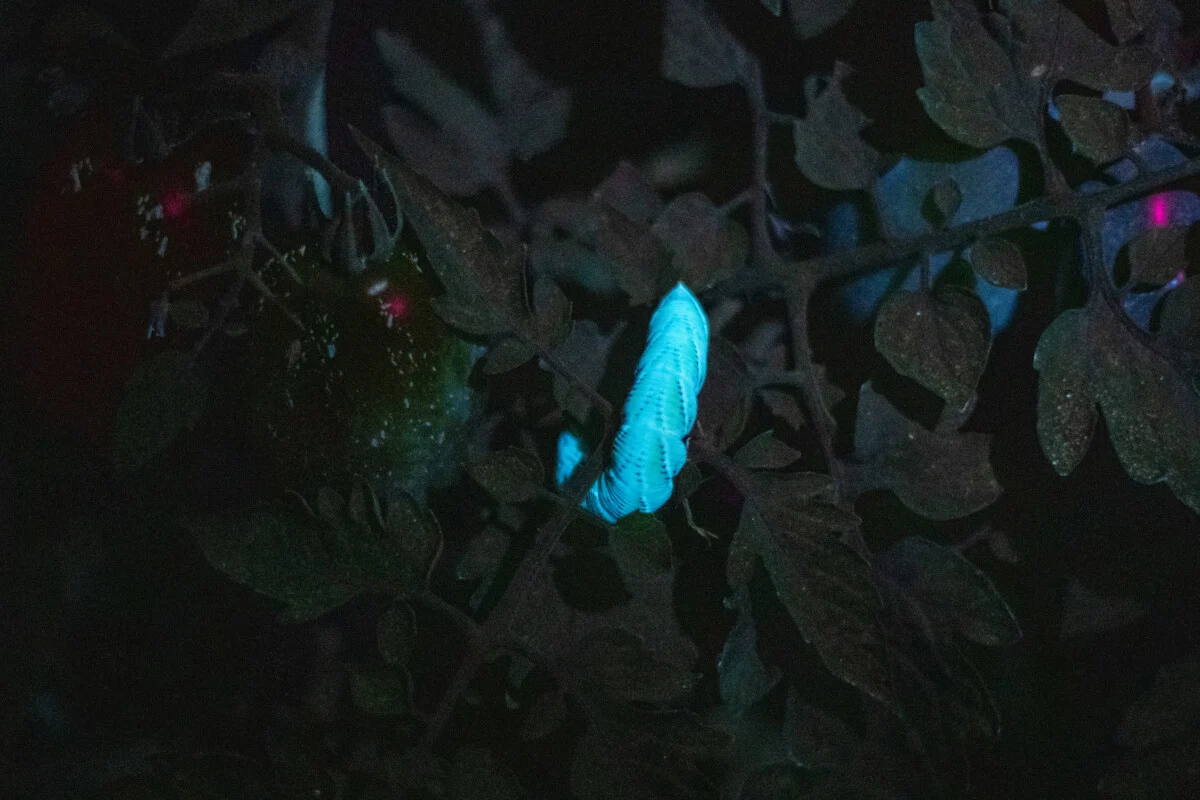
His favorite things are romantic strolls along your tomato plants, eating all the tomato leaves and being invisible even though he’s right under your nose.
We took to the garden after hours to see how well this little trick works and were blown away. None of these photos have been doctored in Photoshop. Some were taken with a mobile phone camera, and others with my fancy Nikon. The results speak for themselves.
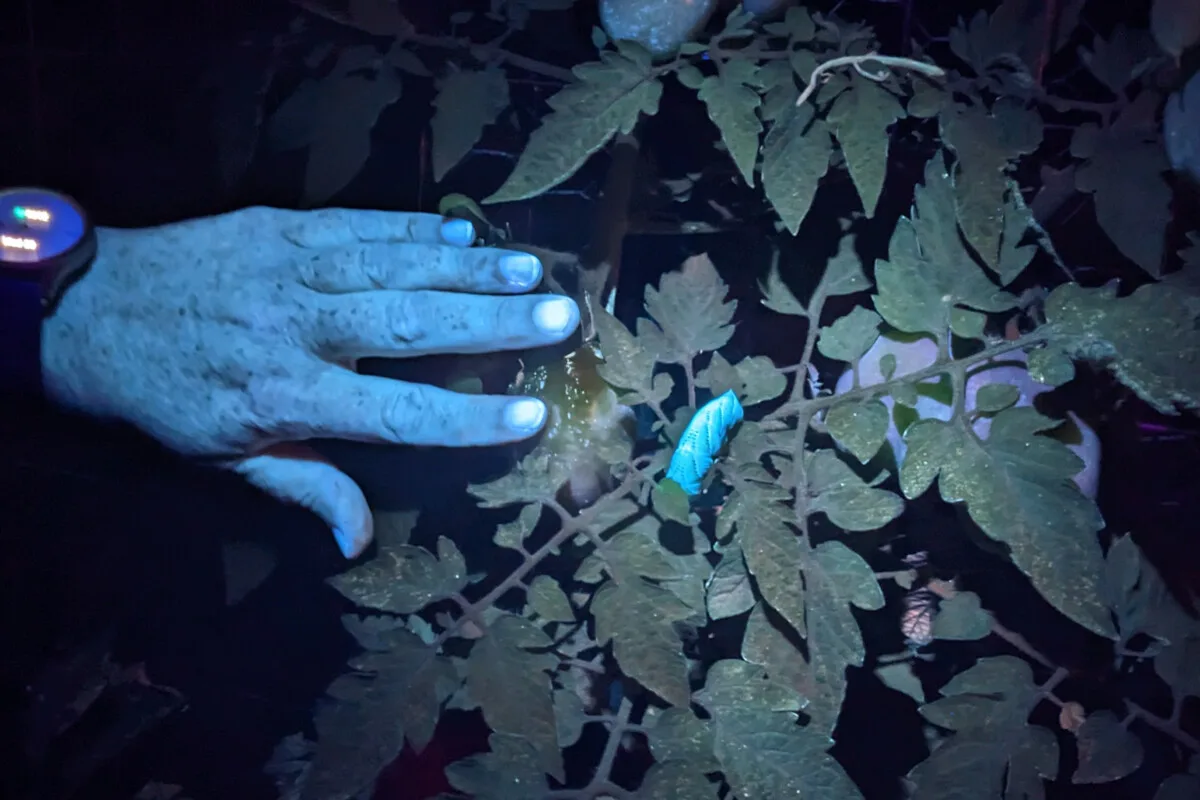
(The results also show that I need to remember to put sunscreen on the back of my hands in the future. Eeps!)
Regardless of size or where they were hiding, the tomato hornworms stuck out like a big, glowing thumb!
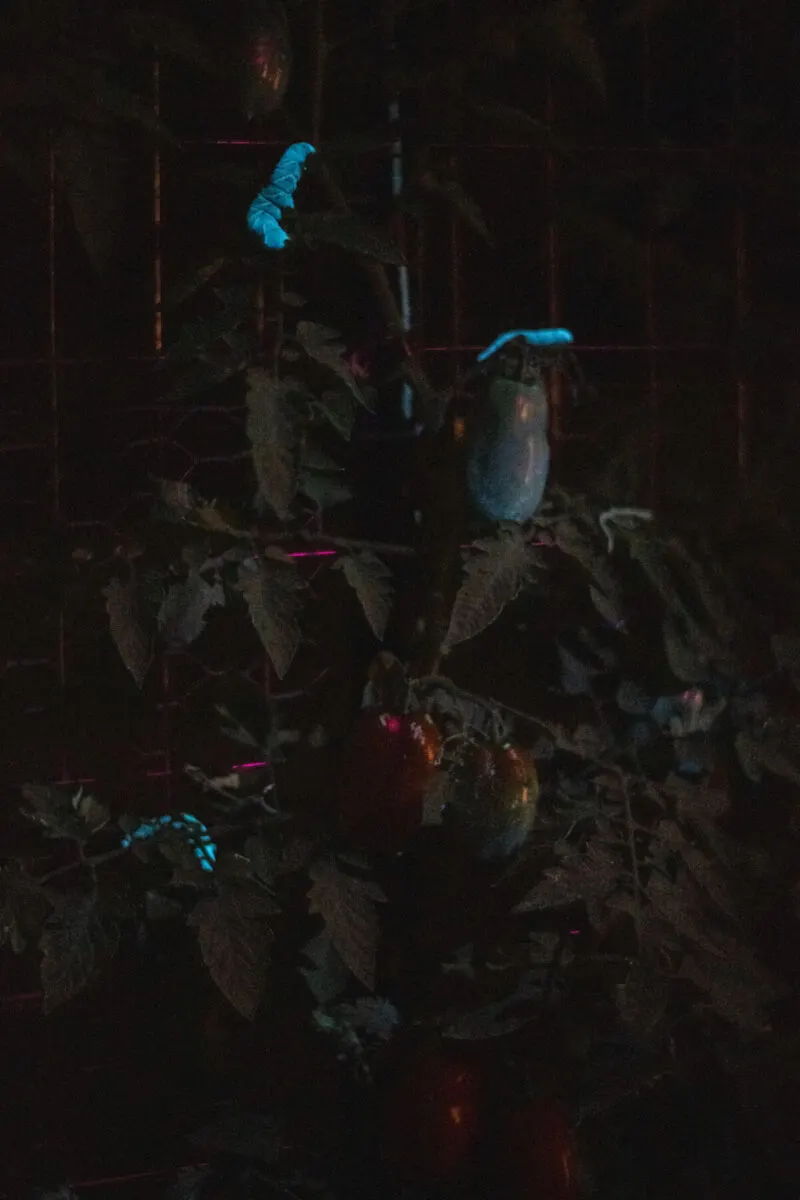
After a couple of nighttime visits to the tomato plants, you’ll soon be rid of tomato hornworms.
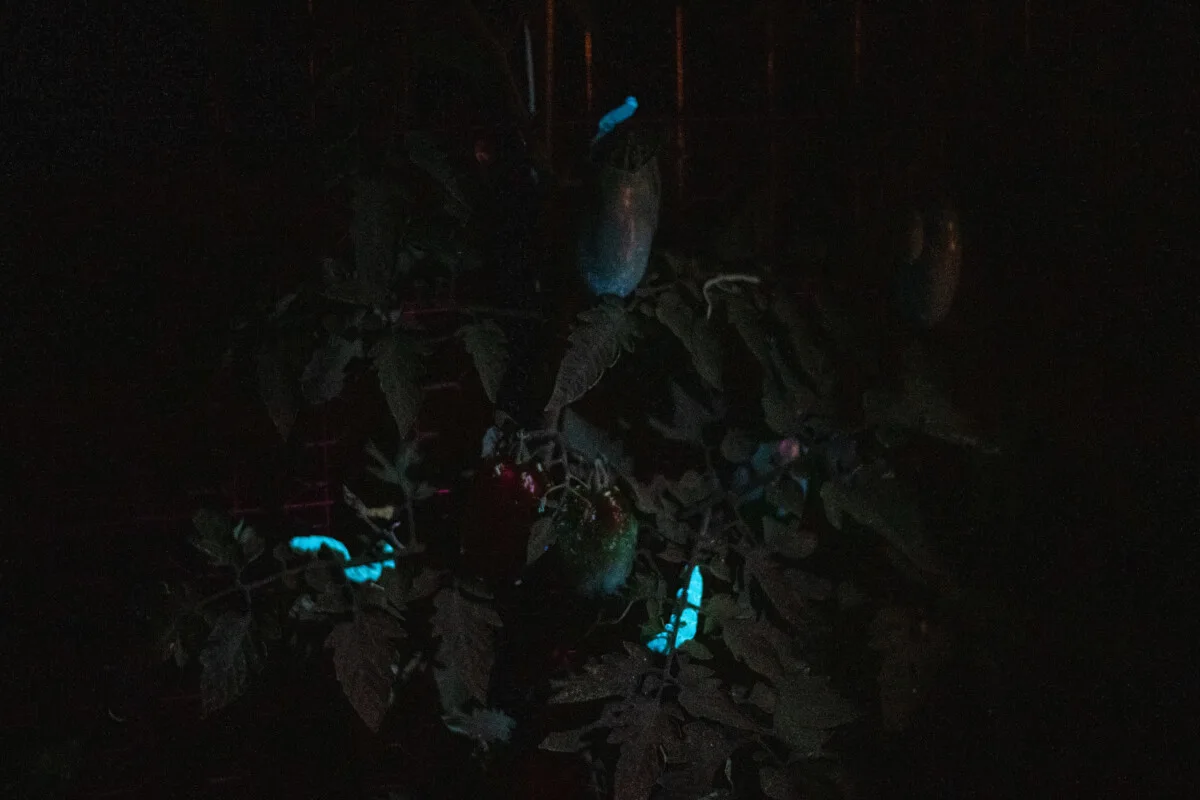
You can drop them in a bowl of soapy water to drown, or if you have chickens, you can feed the hornworms to them. Ours certainly appreciated the fat, juicy treats. They took great delight in stealing the caterpillars from each other and running around the chicken run with their prize before another hen snatched it away.
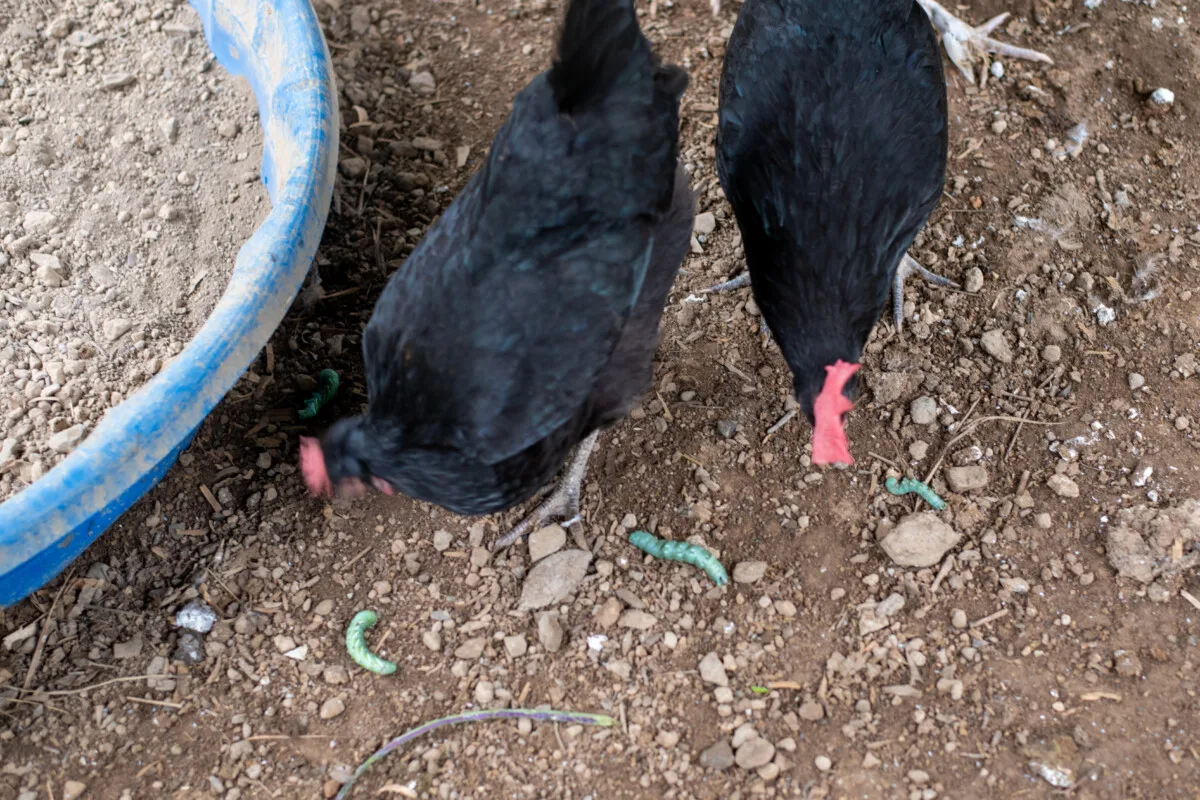
Other Things That Glow in the Garden
Out of curiosity, I checked out my kale under the blacklight. (I grow Dazzling Blue kale because it’s the only kale I find palatable.) Blammo! With the first pass of the UV flashlight, there was a big ‘ol imported cabbageworm and several smaller caterpillars (that I have yet to ID) hanging out on my kale.
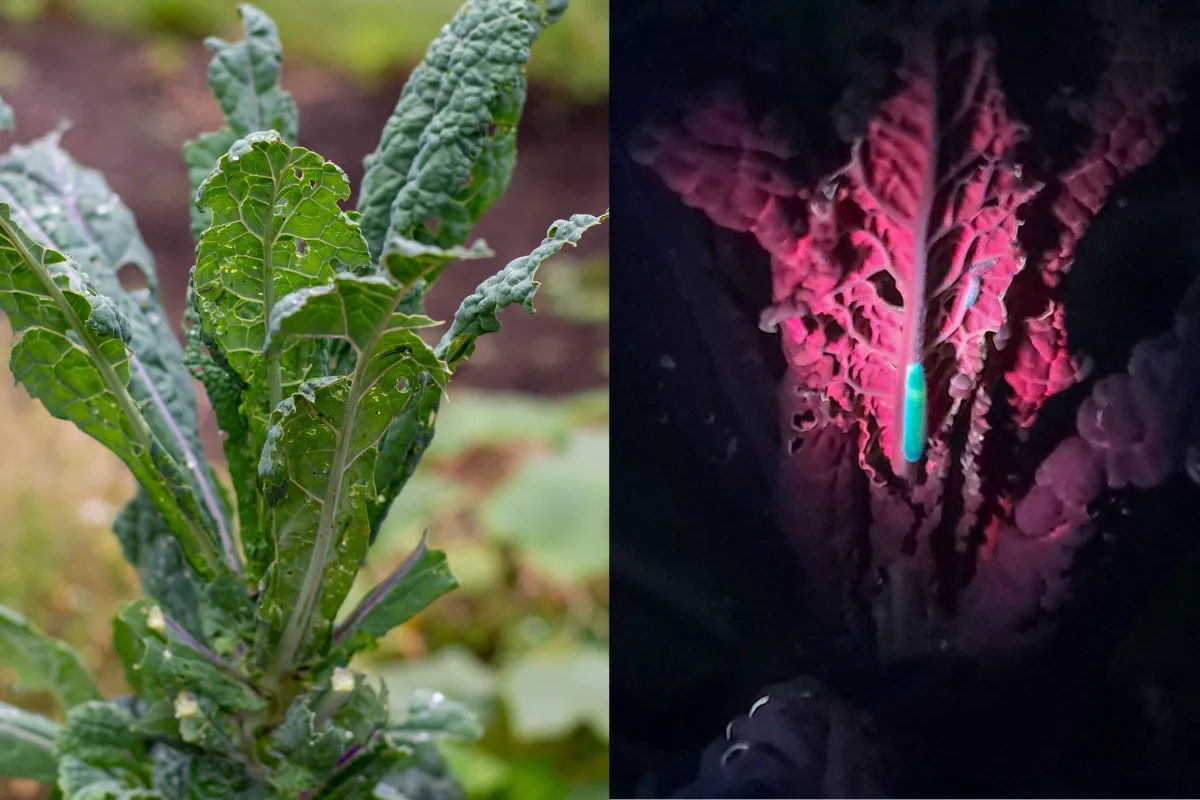
Apparently, most species of Lepidoptera (butterflies and moths) fluoresce in the larva stage. They have phosphors in their skin, which emit light when exposed to radiation. The radiation from the UV light causes the electrons in the atoms to excite, and hey presto, your tomato-munching monster becomes a glow worm.
Many moths and butterflies have body parts that will fluoresce in their adult stage, and often, the eggs do, too.
If you’re a fan of butterflies and moths, grab your UV flashlight and start looking at night for the larva. It will be easier to find them during the dark hours. Plus, it’s interesting to see what parts of them glow at night under the UV light. Monarch butterfly caterpillars look really cool!
Got kids or grandkids?
This would be a fun way to get them interested in gardening while tying in the science behind photosynthesis and light wavelengths. Just make sure you’re careful with the flashlight. UV light damages the eyes, so I suggest an adult be responsible for handling the flashlight if smaller kids are involved.
Red Leaves
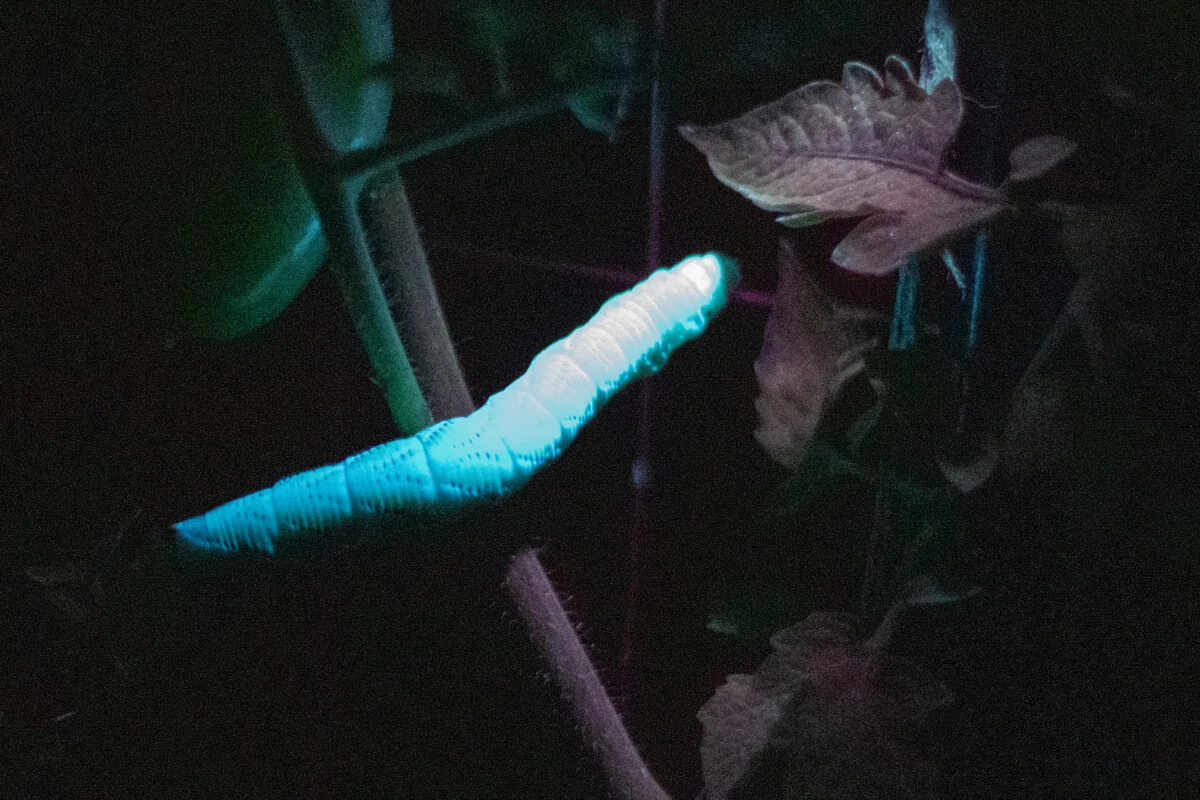
You’ll notice that leaves appear deep red under the UV light. That’s the chlorophyll in the plants. As plants absorb light, it’s used to create energy via photosynthesis. But not all the light is used; some of that energy is released as heat and some as red light. Normally, we can’t see the red light with the naked eye, but with a UV flashlight, suddenly, it becomes visible.
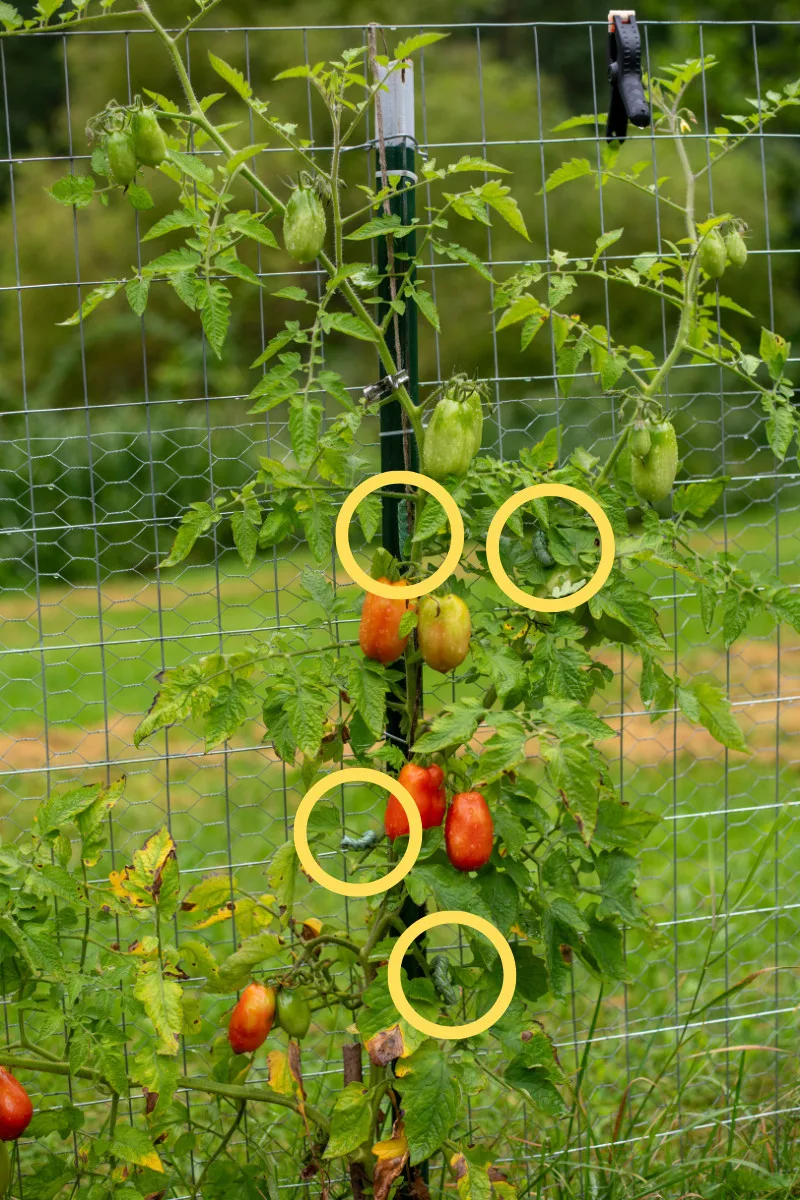
Tips for Tomato Hornworm Hunting
- Wait until it’s good and dark out. An hour after sunset is a good time to shoot for.
- Turn off any outside lights that shine into your garden.
- Wear dark clothing.
- Bring something to put your captured caterpillars in.
- Shine the UV flashlight all over the plant from many angles, above and below.
- A pair of gloves is handy if you’re a bit squeamish. While the caterpillars can’t harm you (they don’t bite, and that intimidating ‘horn’ is completely harmless), they do like to hang on to your plants for dear life, and they’re a bit squishy.
- Get ready for giggles. There’s something inherently goofy about wandering around your garden in the dark with a UV flashlight searching for the live-action version of Eric Karle’s Very Hungry Caterpillar.
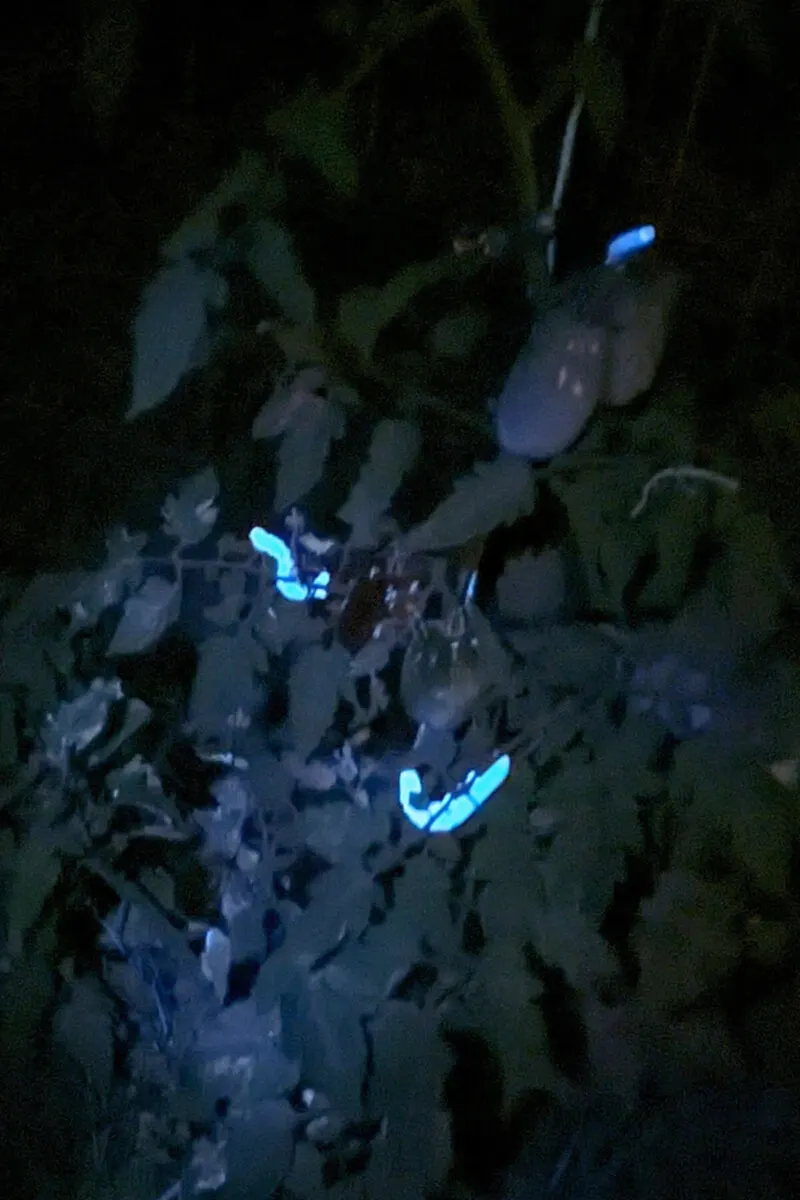
UV Light Safety
It’s important to remember that UV light can damage your eyes, so don’t shine the flashlight directly in your or someone else’s face. Keep your UV flashlight away from children.

Get the famous Rural Sprout newsletter delivered to your inbox.
Including Sunday musings from our editor, Tracey, as well as “What’s Up Wednesday” our roundup of what’s in season and new article updates and alerts.


